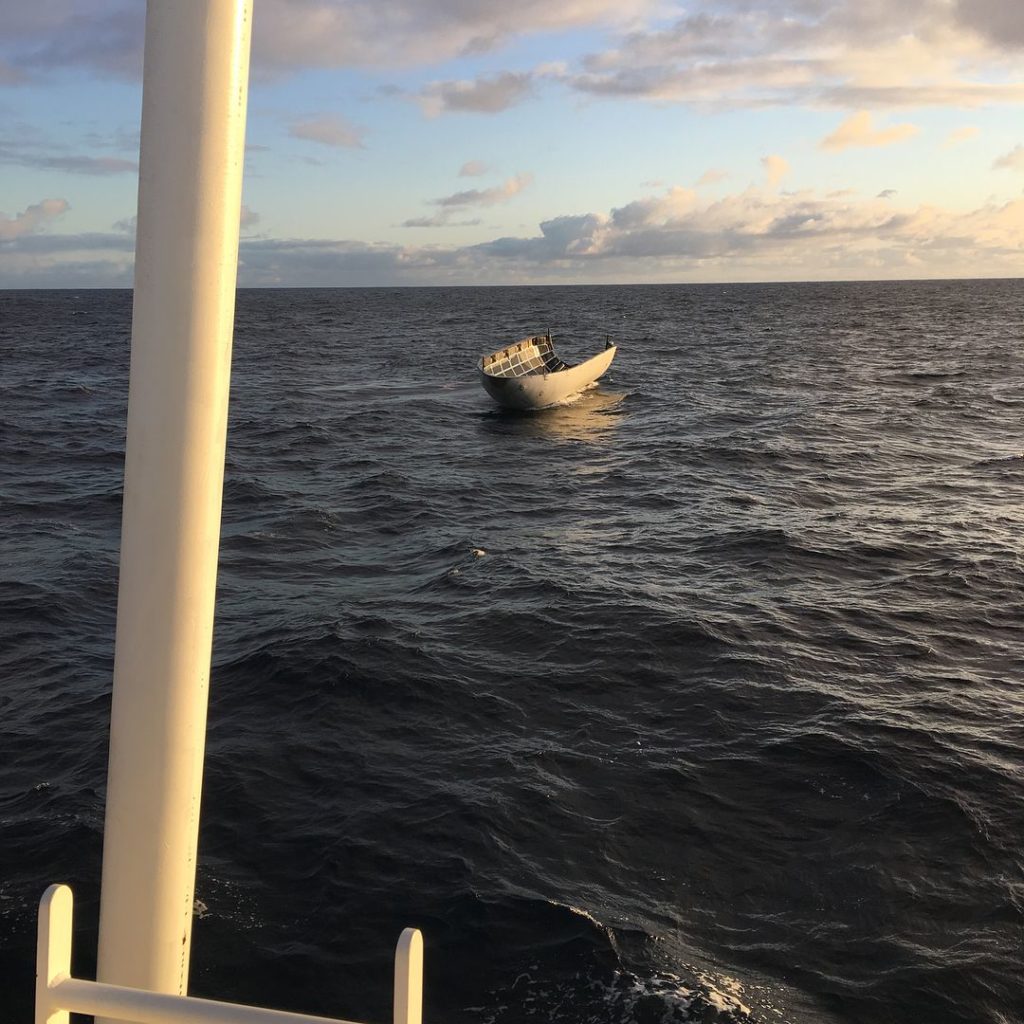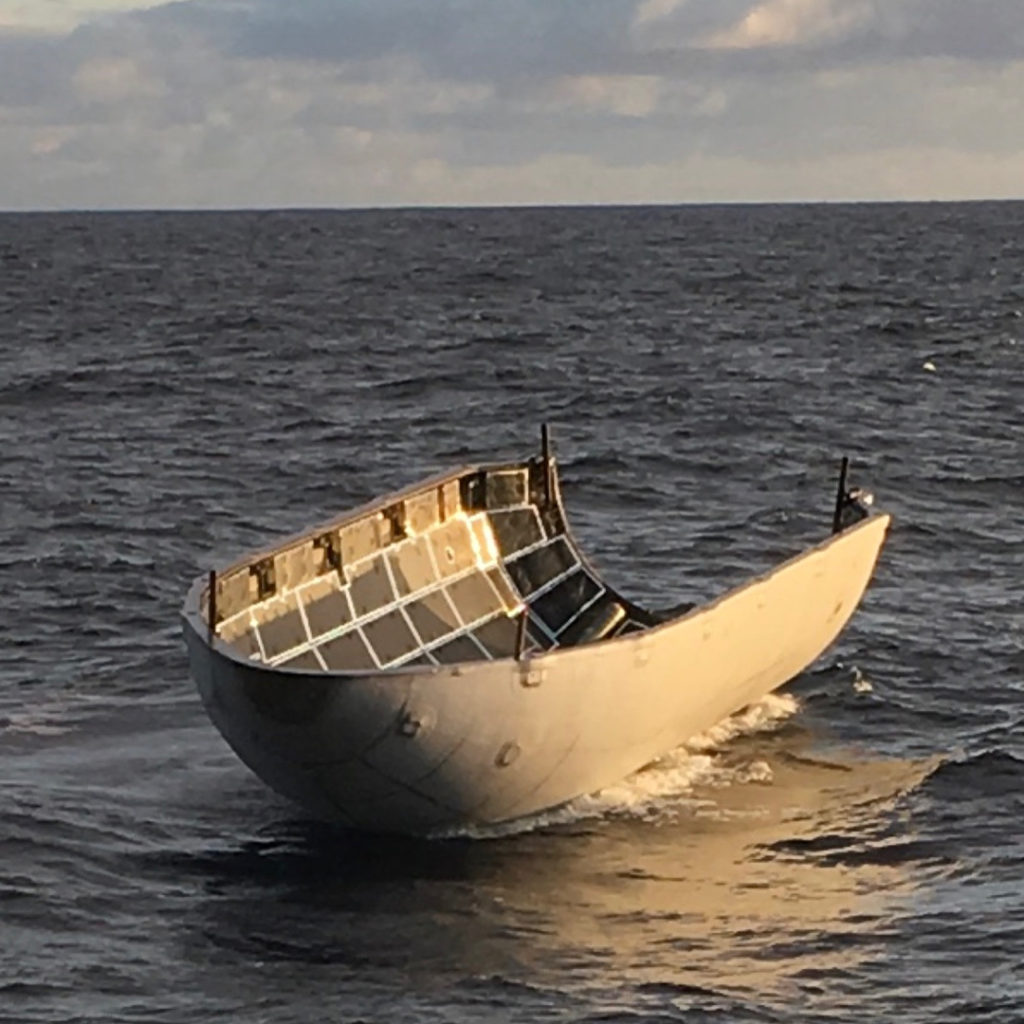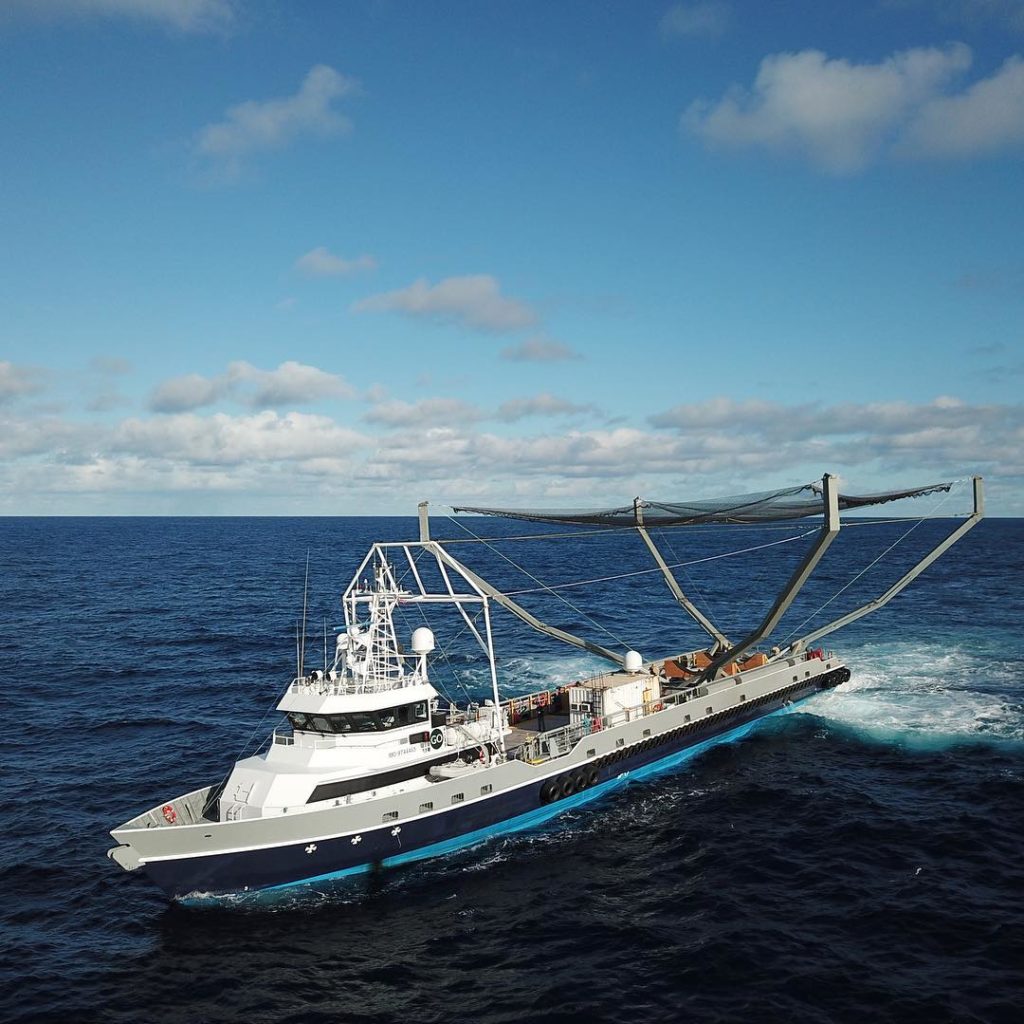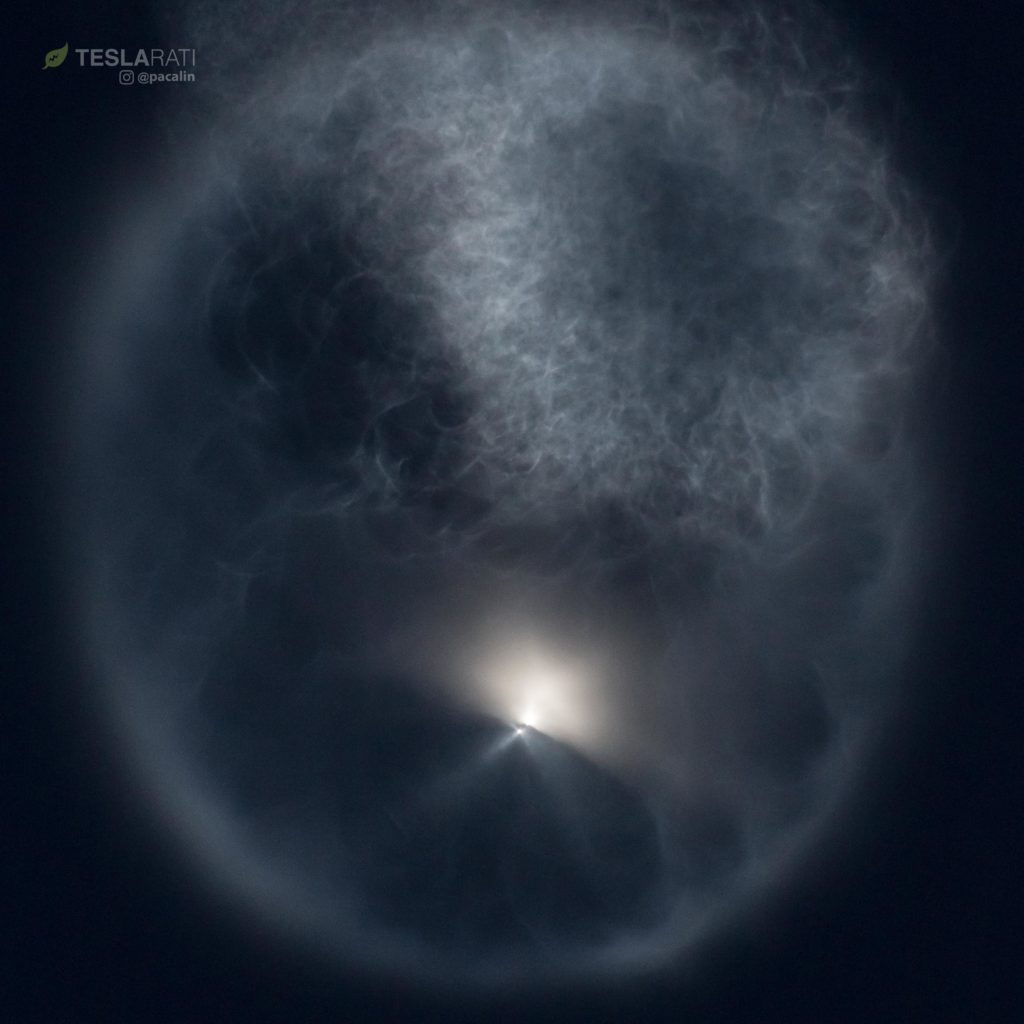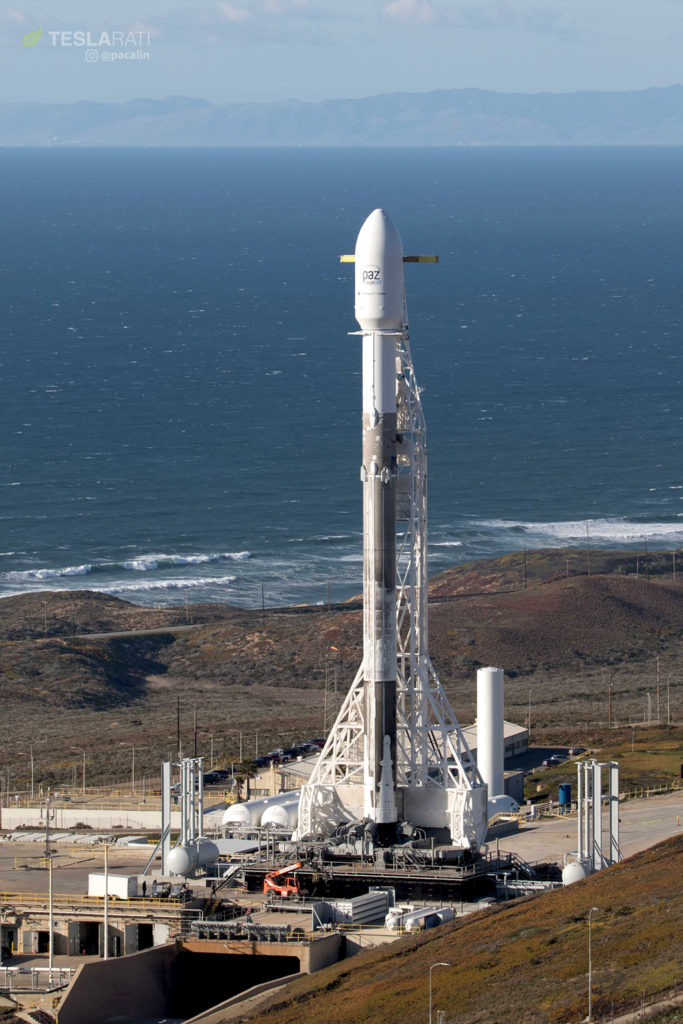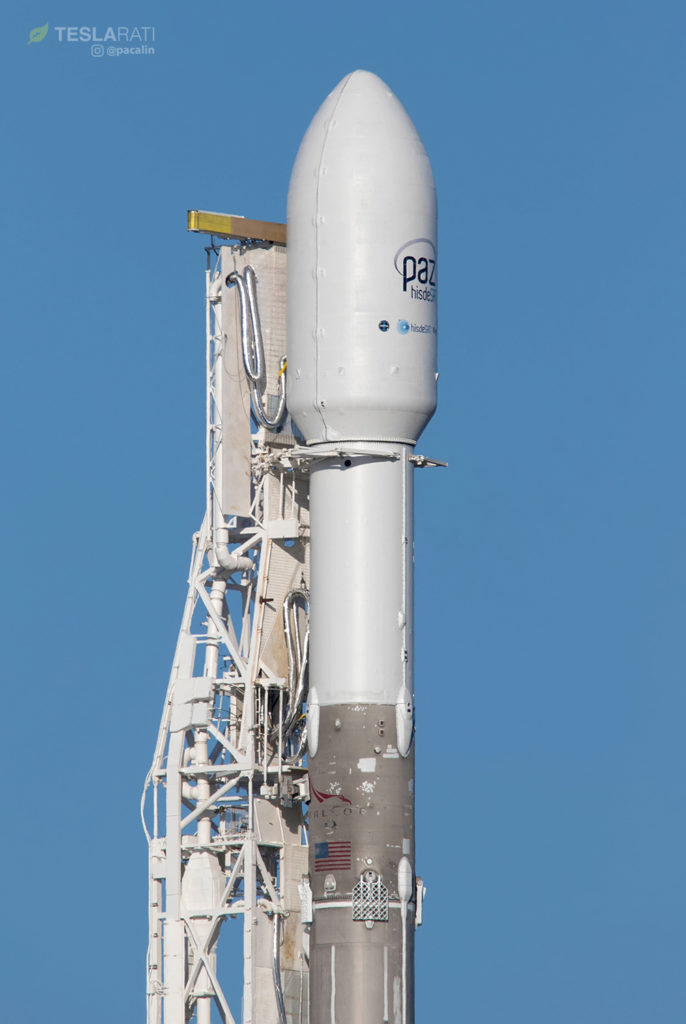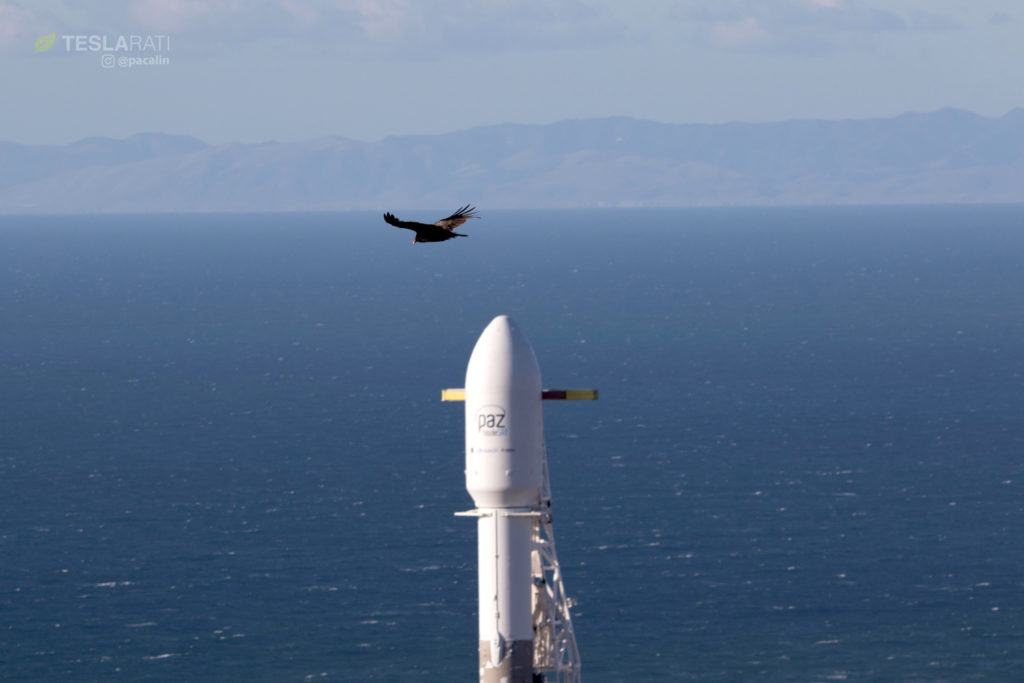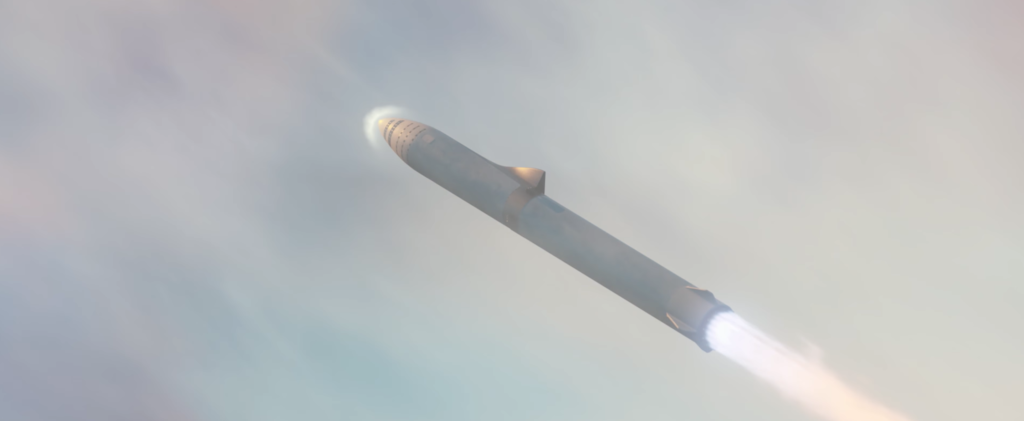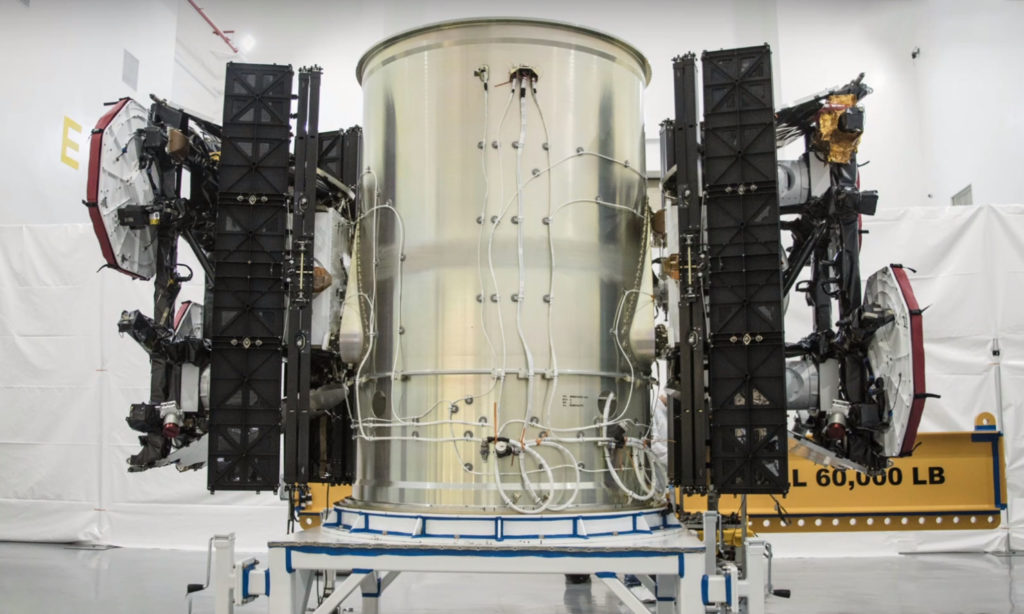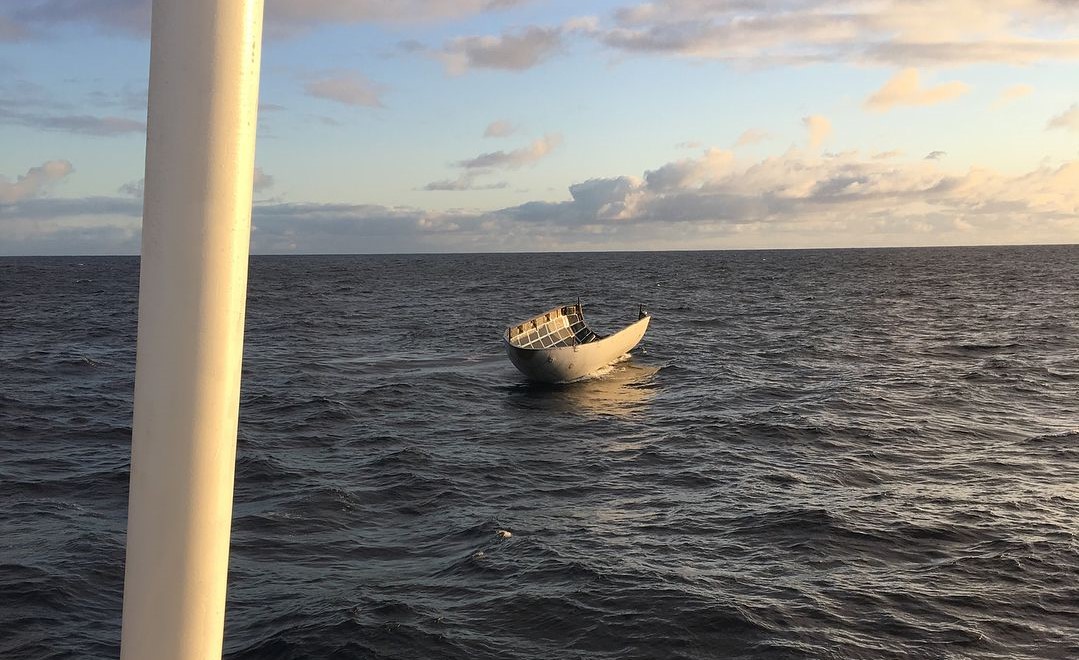
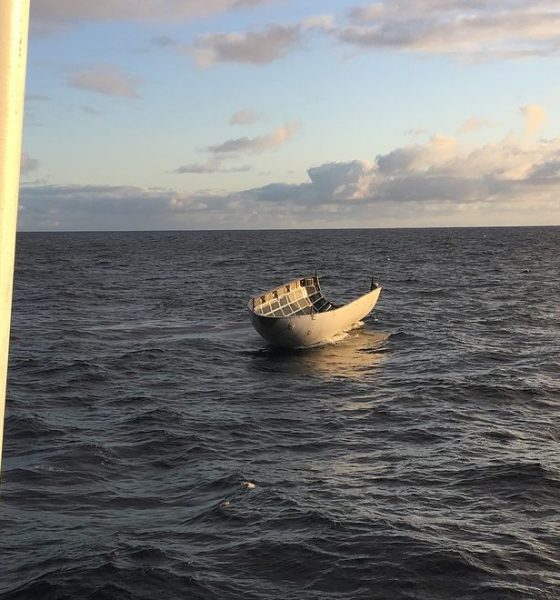
News
SpaceX recovers fairing intact for the first time, Starlink communicating back to Earth
With the launch of PAZ and two of their own Starlink demo satellites, SpaceX has completed its fourth successful launch of 2018, and continued an aggressive series of reusability-focused flight-tests.
Amazingly, the company managed to successfully recover a fairing intact for the first time ever, an absolutely crucial step towards ramping the Falcon family’s launch cadence and reusability. According to CEO Elon Musk, SpaceX’s fairing recovery vessel Mr. Steven missed the fairing by a few hundred meters, meaning that the fairing gently landed in the Pacific Ocean, rather than Mr. Steven’s now-famous fairing recovery net. This is quite possibly the first time in aerospace history that an orbital rocket’s payload fairing has been recovered intact, and the fairing in question looks very much intact.
- It may look unassuming, but that fairing half could swallow an entire school bus and by all means should not be in one piece. (Fairing from PAZ, photo by Elon Musk)
- A closeup of the landed fairing. This particularly fairing is the first flight of Fairing 2.0, a recent upgrade. (Elon Musk)
- Mr Steven is currently undergoing arm surgery (upgrades) at SpaceX’s future BFR factory lot, known as Berth 240. (Elon Musk)
As mentioned by Musk, that massive piece of hardware had to survive reentry into Earth’s atmosphere at no less than Mach 8, considerably more than two times faster than the famous SR-71 Blackbird spy plane. While the fairing’s parafoil appears to have sunk after being quickly detached, careful observers will note three vertical bars at its three corners, almost certainly the points where that parafoil attaches to them and allows it to gently float down to the ocean surface. While not nearly as consequential as SpaceX’s growing expertise with Falcon booster recovery and reuse, each fairing – made largely of carbon fiber composites – takes a huge amount of time and effort to complete, and cost upwards of $3 million each ($6m for both halves). In this sense, SpaceX has managed to recover a pallet of cash, as Musk humorously likened the effort fairing reuse to in 2017.
Given just how good the fairing’s condition appears to be, as well as the calm sea states, it’s very likely that SpaceX will try to pick up the landed fairing with a crane, although that would require a different vessel – Mr. Steven has no crane! Teslarati’s Pauline Acalin will undoubtedly be checking out the Port of San Pedro once Mr. Steven has returned to shore, in hopes of capturing the first-ever photos of a recovered orbital rocket fairing.
Remote camera has been retrieved, wet with morning dew…and WITH images! Awesome launch by SpaceX. @teslarati #SpaceX #Paz #Starlink pic.twitter.com/tDTXxZErN4
— Pauline Acalin (@w00ki33) February 22, 2018

Falcon 9 roars into the dark California sky with PAZ and Starlink. (Pauline Acalin)
- Similar to the Iridium-4 launch that had LA screaming “ALIENS!!!”, this launch gave an incredible show to California. (Pauline Acalin)
- SpaceX intends to launch three Falcon 9s from all three of its pads in just seven days. Pictured here their VAFB pad in California. (Pauline Acalin)
- SpaceX’s first Starlink prototypes launched in late February aboard a flight-proven Falcon 9 booster. (Pauline Acalin)
- Tragically, the pictured bird is not a falcon, but a vulture. (Pauline Acalin)
Starlink hopes tempered despite apparent success
While only mentioned a few times during the webcast, the Falcon 9 that launched earlier today was also carrying additional co-passengers – two SpaceX demonstration satellites, in this case. Confirmed to have successfully deployed and begun communicating with SpaceX ground control, this is another huge accomplishment for SpaceX and marks their first-ever steps into dedicated satellite manufacturing and operation. Despite the significance of this event, SpaceX was keen to lower expectations for the satellite internet network, named Starlink. The following statement was provided during the webcast:
“Even if these satellites work as planned, we still have considerable technical work ahead of us to design and deploy a low Earth orbit satellite constellation. If successful, [this system] would provide people in low to moderate population densities around the world with affordable, high-speed internet access, including many that have never had internet access before.”
https://www.instagram.com/p/BfgTyTzgYVm/
For all intents and purposes, this appears to be a significant departure from previous statements given about Starlink by the rocket company. The explicit mention of “low and moderate” population densities being the only focus of service contrasts heavily with a general sense that Starlink was intended from the outset to provide universal internet around the globe to anyone who could afford the service. This certainly serves as a confirmation that there are major technological hurdles that will need to be overcome for Starlink to become the universal internet many have come to hope for from SpaceX – it would appear that it will be quite difficult to serve high-density populations with SpaceX’s current choice of technologies for their constellation.
Still, the demand is undeniably there. Even readers of Teslarati expressed an immediate desire to ditch their cable companies and ISPs, both in the US and abroad. If SpaceX can make it happen, they will have hordes of eager ISP-hating internet users desperate for any alternatives, and your author is proudly among them. The badly served aside, it sounds like SpaceX may be pivoting towards Starlink as a method of connecting the underserved – mainly those in rural or undeveloped areas. Even in the US, this is a major problem for those that do not live near large cities, and US ISPs are exceptionally anti-consumer in these situations – often times charging obscene costs for cable installation or outright refusing to provide coverage. Starlink could be a boon for those individuals in the US and elsewhere, especially where a simple lack of infrastructure is the cause. Much of Africa suffers from this, although mobile networks have become a backbone for a relatively unique pattern of mobile phone usage.
- .While SpaceX’s own visualizations are gorgeous and thrilling in their own rights, Romax’s interpretation adds an unparalleled level of shock and awe. (SpaceX)
- SpaceX’s first two Starlink prototype satellites are pictured here before their inaugural Feb. 2018 launch, showing off a utilitarian design. (SpaceX)
Here’s to hoping that SpaceX manages to once again rise to an exceptional technological challenge. As with all R&D efforts, the company’s satellite effort would be helped immensely with additional funds, and thankfully Falcon 9 Block 5 is very nearly ready to fly its first missions. This highly reusable iteration of the rocket could enable SpaceX to fly dozens of missions with a single Falcon 9 booster, and would thus enable unprecedented profit margins for a launch company, at least in the interim. Eventually, SpaceX is bound to bring down its prices for the customer, but the first need to recoup their reusability and Falcon Heavy investments, while also ensuring a sound business plan to support the development of their BFR and BFS vehicles that may one day enable the colonization of space. Starlink may be another beneficiary of those profits, and could itself one day act as a source of reliable funding for SpaceX’s interplanetary endeavors.
Teslarati – Instagram – Twitter
Tom Cross – Twitter
Pauline Acalin – Twitter
Eric Ralph – Twitter

News
Tesla launches crazy Full Self-Driving free trial: here’s how you can get it
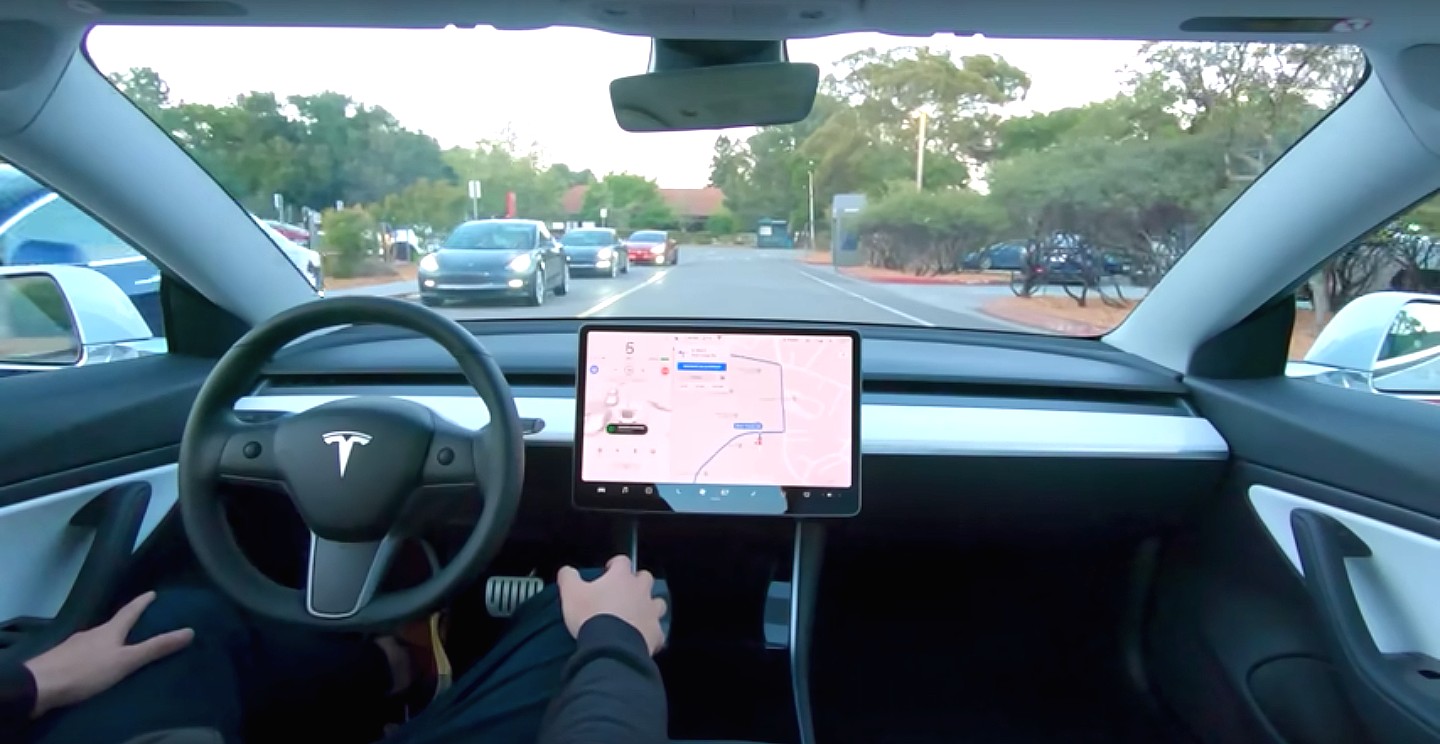
Tesla is launching a crazy Full Self-Driving free trial, which will enable owners who have not purchased the suite outright to try it for 30 days.
There are a handful of stipulations that will be needed in order for you to qualify for the free trial, which was announced on Thursday night.
Tesla said the trial is for v14, the company’s latest version of the Full Self-Driving suite, and will be available to new and existing Model S, Model 3, Model X, Model Y, and Cybertruck owners, who will have the opportunity to try the latest features, including Speed Profiles, Arrival Options, and other new upgrades.
🚨 Tesla is launching a free 30-day trial of Full Self-Driving in North America for owners.
It includes every model, but you need v14.2 or later, and you cannot have already purchased the suite outright. https://t.co/8CNmxxOkVl
— TESLARATI (@Teslarati) November 27, 2025
You must own one of the five Tesla models, have Full Self-Driving v14.2 or later, and have an eligible vehicle in the United States, Puerto Rico, Mexico, or Canada.
The company said it is a non-transferable trial, which is not redeemable for cash. Tesla is reaching out to owners via email to give them the opportunity to enable the Full Self-Driving trial.
Those who are subscribed to the monthly Full Self-Driving program are eligible, so they will essentially get a free month of the suite.
Once it is installed, the trial will begin, and the 30-day countdown will begin.
Tesla is making a major push to increase its Full Self-Driving take rate, as it revealed that about 12 percent of owners are users of the program during its recent earnings call.
Tesla CFO Vaibhav Taneja said during the call:
“We feel that as people experience the supervised FSD at scale, demand for our vehicles, like Elon said, would increase significantly. On the FSD adoption front, we’ve continued to see decent progress. However, note that the total paid FSD customer base is still small, around 12% of our current fleet.”
Earlier today, we reported on Tesla also launching a small-scale advertising campaign on X for the Full Self-Driving suite, hoping to increase adoption.
Tesla Full Self-Driving warrants huge switch-up on essential company strategy
It appears most people are pretty content with the subscription program. It costs just $99 a month, in comparison to the $8,000 fee it is for the outright purchase.
News
Tesla Full Self-Driving warrants huge switch-up on essential company strategy

Tesla Full Self-Driving has warranted a huge switch-up on an essential company strategy as the automaker is hoping to increase the take rate of the ADAS suite.
Unlike other automotive companies, Tesla has long been an outlier, as it has famously ditched a traditional advertising strategy in favor of organic buzz, natural word-of-mouth through its production innovation, and utilizing CEO Elon Musk’s huge social media presence to push its products.
Tesla has taken the money that it would normally spend on advertising and utilized it for R&D purposes. For a long time, it yielded great results, and ironically, Tesla saw benefits from other EV makers running ads.
Tesla counters jab at lack of advertising with perfect response
However, in recent years, Tesla has decided to adjust this strategy, showing a need to expand beyond its core enthusiast base, which is large, but does not span over millions and millions as it would need to fend off global EV competitors, which have become more well-rounded and a better threat to the company.
In 2024 and 2025, Tesla started utilizing ads to spread knowledge about its products. This is continuing, as Full Self-Driving ads are now being spotted on social media platforms, most notably, X, which is owned by Musk:
NEWS: Tesla is running paid advertisements on X about FSD (Supervised). Here’s an ad they started running yesterday: pic.twitter.com/IHVywLMyTd
— Sawyer Merritt (@SawyerMerritt) November 25, 2025
Interestingly, Tesla’s strategy on FSD advertising is present in Musk’s new compensation package, as the eleventh tranche describes a goal of achieving 10 million active paid FSD subscriptions.
Full Self-Driving is truly Tesla’s primary focus moving forward, although it could be argued that it also has a special type of dedication toward its Optimus robot project. However, FSD will ultimately become the basis for the Robotaxi, which will enable autonomous ride-sharing across the globe as it is permitted in more locations.
Tesla has been adjusting its advertising strategy over the past couple of years, and it seems it is focused on more ways to spread awareness about its products. It will be interesting to see if the company will expand its spending even further, as it has yet to put on a commercial during live television.
We wouldn’t put it out of the question, at least not yet.
News
Tesla Model Y Standard: first impressions from a Premium owner
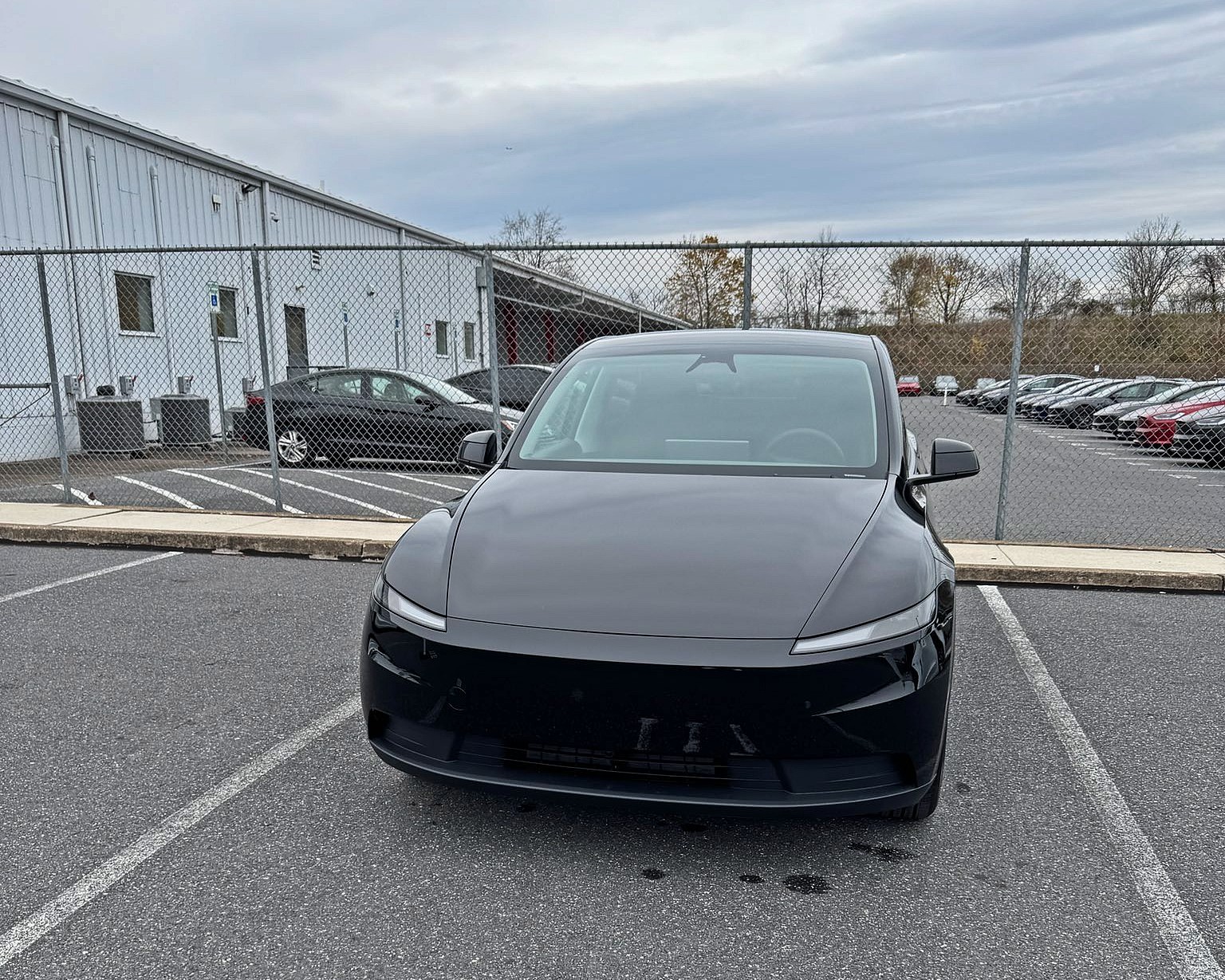
Tesla was nice enough to hook us up with the new Model Y “Standard” trim for a few days, and while we’ll be sure to fill you in on the full experience in the coming days, there are a lot of differences we noticed right off the bat, which make the ownership experience different from the “Premium” configuration level.
I purchased a Model Y Long Range All-Wheel-Drive back in August and took delivery just two weeks later. Through the first three months of owning my car, I’ve come to love so many things about the Tesla experience.
I traded my ICE vehicle for a Tesla Model Y: here’s how it went
However, I was interested in experiencing the affordable trim and seeing whether I would miss any of the voided features of the “Premium” Model Y.
Through the first 24 hours, here are my first impressions of the Model Y Standard as a Premium trim level owner:
Overall Aesthetic
The lack of a light bar is not something that is a dealbreaker. In fact, I would argue that the Model Y Standard’s more traditional headlight design is just as pleasing from an aesthetic standpoint.
The car is great looking from top to bottom; there are not a substantial number of differences besides the lack of a lightbar on both the front and the back of the car.
Overall, it is a very sleek vehicle, but the major changes are obviously with the interior.
Interior Changes
This is where the big differences are, and some of the things I’ve gotten used to in the Premium are not included. If I didn’t have a Premium Model Y already, I’m not sure I’d miss some of the things that are not present in the Standard trim, but I believe I’d get annoyed with it.
First impressions:
✅ Interior is excellent. I definitely miss the additional storage already that is available in my Premium. I could definitely get over it though
✅ Noticeable step down in sound system. Long Time by Boston absolutely cranks in the Premium; it’s still very… https://t.co/JNWvxTd8p1
— TESLARATI (@Teslarati) November 25, 2025
Storage
The Premium has a large storage compartment between the cupholders and the wireless charger, which is not present in the Standard trim. Instead, it is more like the Cybertruck, as there is a pass-through and floor storage.
I think that the pass-through is nice, but the additional storage is something I take advantage of, especially as someone who films Full Self-Driving videos, which requires hauling mounts, GoPros, and other accessories.
The sleekness of the Premium trim is also something I prefer; I really enjoy having the ability to close those compartments and cover the cupholders.
Obviously, this is a really trivial issue and not something that is substantially impactful from an ownership experience. If I weren’t already an owner, I am not sure I’d even have something to complain about.
Material Differences
The Premium trim seats are completely Vegan Leather, which I really do like, even as someone who doesn’t really love leather seats due to their temperature dependency.
The Standard trim features a Textile and Vegan hybrid, which has half of the seat a different material than the other.
The material is very similar to what I had in my previous car, a Bronco Sport. It was very durable, easy to clean, dried quickly, and hid a lot of things that leather does not, like oils from your skin, which constantly require attention to keep your interior looking fresh.
The wireless charger is also a different material, as the Premium features an Alcantara material on that. The Standard has a rubberized and textured backing, which looks good, too. They’re both more than suitable.
Other Missing Features
The Standard lacks a few minor things, most noticeably is the ambient lighting. The biggest change, however, and something I really miss, is the glass roof.
A lot of people told me that when I got my Model Y, I wouldn’t even notice the glass roof after a few weeks. That could not be further from the truth. I look out of it all the time, and it’s one of my family’s favorite parts of the car.
My Fiancè and I really love parking and watching Netflix when we pick food up, especially when it’s raining, because the glass roof gives such a great view.
We also loved it as Fall arrived, because it was great to look at the foliage.
Buy the Tesla.
Enjoy the glass roof. pic.twitter.com/r2GDyOEEWu
— TESLARATI (@Teslarati) October 28, 2025
Bigger Differences
There are also a handful of very noticeable differences from the overall cabin experience, especially with the sound system.
Much Weaker Sound System
The Model Y Standard has just 7 speakers and 1 amp, with no subwoofer. This is a significant step down from the 13-15 speakers in the Premium Long Range AWD Model Y, the 2 amps it comes with, and 1 subwoofer in the trunk.
I usually like to listen to Long Time by Boston to test out a sound system, and it was noticeably weaker in the Standard. It was missing a big portion of the umph that is provided by the Premium’s sound system.
Cabin Noise
It feels like the Cabin Noise is definitely more noticeable in the Standard, which is something I really love about my Model Y. It is able to dampen so much road noise from louder cars, and I don’t feel as if it is very quiet in the Standard.
This is perhaps the biggest make-or-break for me with this car. I truly have been spoiled by how quiet the cabin is in the Premium, and it’s due to the lack of acoustic-lined glass in the Standard.
I will be doing a more in-depth review of the Model Y Standard, especially with ride quality, later this week.
